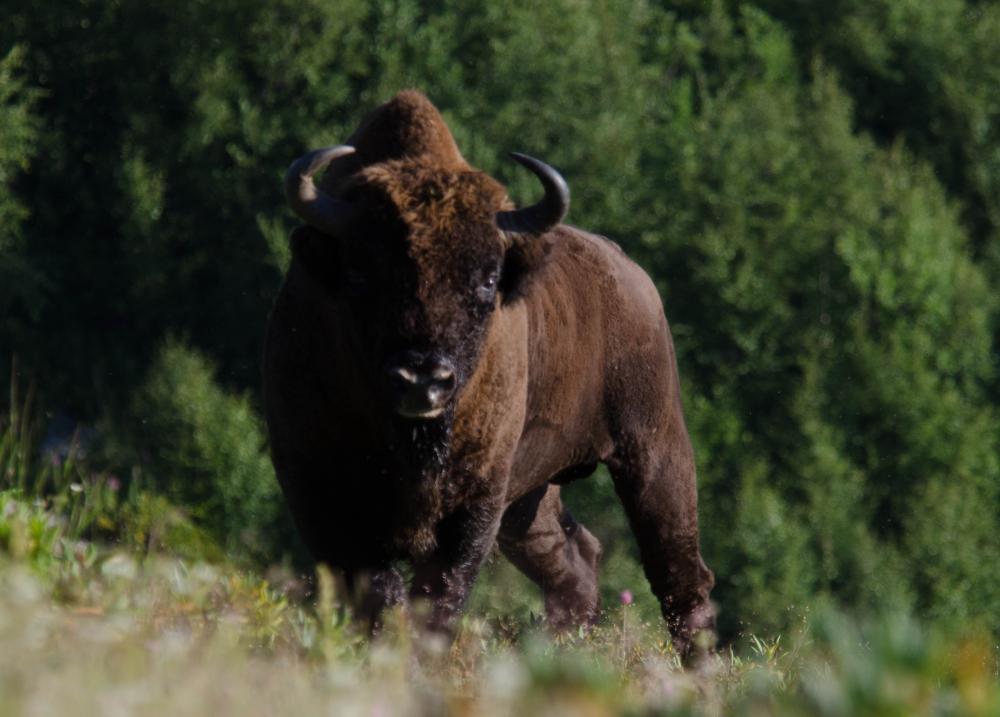Posted 01/24/13
Political tumult in Russia over the past century has ushered a host of ecological changes in the region, including the near-extinction of the Caucasian bison. Seventeen aminals become a founder of so-called mountainous bison, 13 of them lowland bison Bison bonasus bonasus, 3 American bison B. bison and one is the last remaining Caucasian bison in captivity. While the pure subspecies was inevitably lost in the genetic diversification, it has been reintroduced to its old habitat. Reintroduction of bison has a more than 60 years of successful history, and now it's time to reintroduce more animals. We are collaborating with German and Russian scientists who are mapping suitable habitats to identify the best places for subsequent of reintroduction.

The Caucasian bison was a native subspecies of European bison, dwelling in the forests of Caucasus Mountains. In conjunction to socioeconomic shocks related to the World War I and October revolution, bison went extinct, and in 1927, the last wild Caucasian bison were killed. Only 1-3 were left in captivity. In an effort to reintroduce a population of ‘Caucasus-like’ bison to its native range, 13 lowland bison and the only reproducing Caucasian bison male, along with 3 American bison for genetic diversity, were bred. The herd which resulted from this breeding was placed in the Crimea peninsula, Ukraine, and reached 14 bison in 1941, but was wiped out during Nazi occupation. Five animals were introduced to the Caucasus Nature reserve in the 1940. At first, the herd was kept in captivity, but gradually the enclosure was opened. Feeding and observation efforts continued, even after the enclosure was removed. In 1960s the herd reached 189 animals and became completely independent. This animal was named the highland bison Bison bonasus montanus. Currently, about 600 bison live in Caucasus Nature Reserve. It is a big success of reintroduction program but carrying capacity allows reintroduction more animals. Also, the larger herd is the less vulnerable it is. Supplementary breeding efforts produce about 20 bison per year. It is possible to reintroduce more animals to Caucasus Mountains, but assessment of safety of an area before the animals are reintroduced is necessary.We are collaborating with German and Russian scientists who are modeling bison habitat to identify the best area for bison to be introduced. In Germany, our key collaborator is Tobias Kuemmerle (http://www.geographie.hu-berlin.de/Members/kuemmerle_tobias), and his biogeography laboratory (http://www.geographie.hu-berlin.de/abteilungen/biogeographie). In Russia, our collaborators are Sergej Trepet and Taras Sipko. The first step of this project is to analyze bison range maps. The Caucasian bison used to have different habitats in winter and summer time because of vertical migration. Nowadays, the highland bison do the same. The analysis of winter and summer maps of bison range will help to identify drivers affecting the range. Possible drivers include anthropogenic disturbance, pasture and shelters areas available and so on. Given the result of this analysis, we will be able to determine the most suitable habitats for the bison outside of Caucasus Nature Reserve. Maps of suitable habitats will allow reintroduction of more bison to Caucasus Mountains and increase the number of wild highland bison.”
Story by Jessica Gorzo
